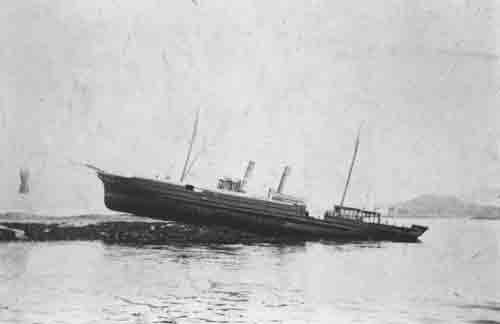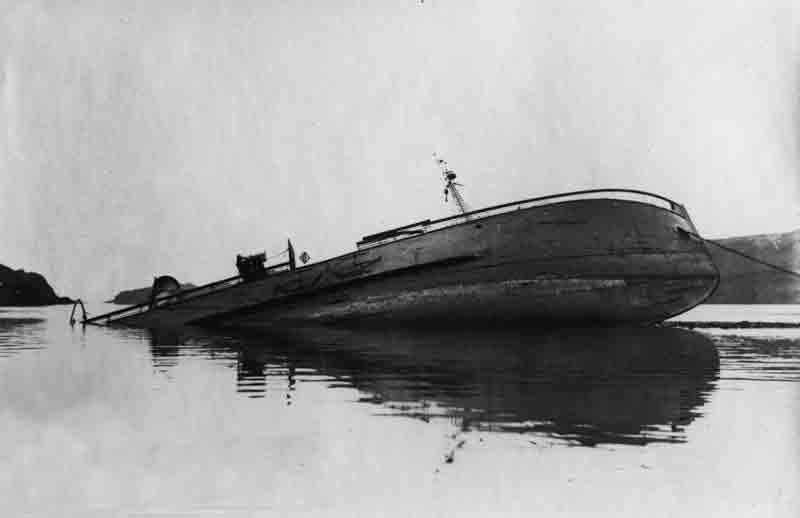The steel steamship Inkosi was built at the Hall Russell yard Aberdeen and launched on the 2nd October 1902 for J T Rennie and Son Ltd. She measured 350.2′ x 43.3′ x 20.0′ and weighed 3,661 gross tons, 2,274 net tons. Her triple expansion steam engine built by Hall Russell delivered 483 nominal horse power. In 1911 she was purchased by the Charente Steamship Company of Liverpool and began operating out of that port predominantly employed on the Irish Sea routes.
Under the command of her captain, John Arthur. she set sail from Liverpool at 6.00 p.m. on Wednesday 27th March 1918 heading initially for Lamlash, Arran and then onwards to Pernambuco, Brazil with a cargo 2,000 tons of coal and 300 tons of general cargo. At 7.18 a.m. on Thursday 28th March, when approximately 10 miles from Burrow Head, Wigtownshire and zigzagging at full speed, she was struck by a torpedo from U-96 (Commander Heinrich Jess) midships on the port side. The explosion brought the steamer to a dead halt and killed three firemen outright. Immediately the boats were then lowered. One boat had been damaged by the impact and a second rendered useless as it was lowered but the remaining boats were safely launched and the forty seven surviving crewmen began to scramble aboard them.
Bravely two gunners, Lieutenant Corporal W. N. Griffiths and Private S. A. Mahugh, held back manning the aft gun in case the submarine should show herself on the surface. By the time they abandoned ship the decks aft were awash and the engine room was full of water. However the ship was to remain stubbornly afloat until a periscope appeared and the German submarine surfaced intent on finishing her off with her deck gun. She fired a number of rounds at the Inkosi and eventually, at 8.18 a.m., the steamer sank. The Inkosi’s lifeboats landed at the Isle of Whithorn and it was only then that the three firemen were discovered to be missing presumed to have died in initial explosion.
The wreck of the Inkosi lies in position 54°35.449’N, 004°24.885’W (WGS84) oriented 117°/297°. The ship is well broken but her stern section is still fairly intact lying in her starboard side in 50 metres with a least depth of around 39 metres at low tide. Forward of the stern castle the wreck is progressively more broken but the central section, including the engine room, still provides an interesting dive as the Inkosi was a large ship. The wreck covers and area some 100 metres long by 20 metres wide making exploration in a single dive almost impossible. The wreck lies in an area susceptible to strong tides so is better dived at slack water and visibility, while often good, can be low if rainwater brings sediment from the Solway Firth. The picture below shows the stern section of the wreck and picks out some key points of interest; 2-rear port lights to cabins, 3-propellor and rudder, 4-stern deck gun, 6-stern wheel house, 7-skylight to accommodation below, 8-stern hold, 9-stern winch, 10-tangle of old ropes to be avoided.
We would like to thank Newton Stewart Sub Aqua Club (BSAC 1853) for kind permission to reproduce their ‘Wreck Tour’ image of the Inkosi from their website. This and information on other shipwrecks in the Solway Firth area can be found here https://www.nsdivers.co.uk.
































